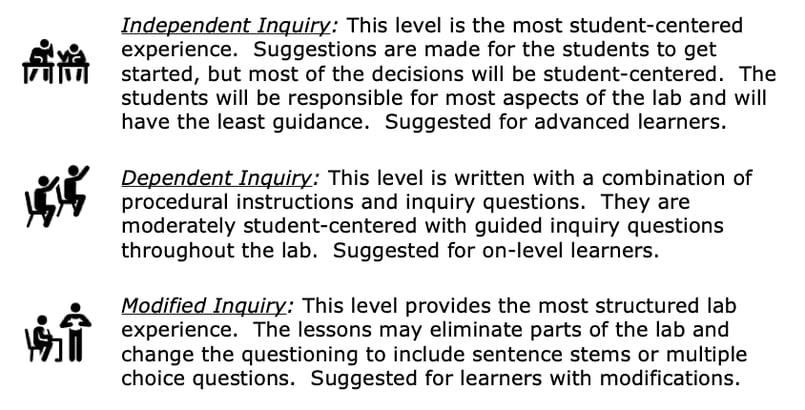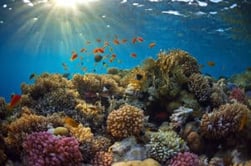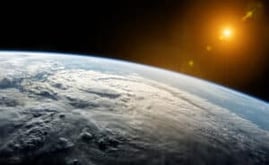Human Impact on Oceans Inquiry Lab
Middle School Inquiry Lab on Human Impact on Oceans
In this lab students will learn about the collapse of the North Atlantic cod population. They will model the effects of a fishing quota on a population in recovery.
Each inquiry lab will contain an essential question that will drive the lesson and make students think. For this lesson, the essential question is:
- How are ocean resources like cod affected by human activity?
BACKGROUND INFORMATION AND MATERIALS LIST:
Students will begin the lab by reading the essential question and background information. This can be done individually, as lab groups, or as a whole class. If you consider lab groups, you also might include some type of whole class formative checks before digging into the lab.

Materials List:
- 1 set of cod cards
- 1 cup of white dry beans
- 1 cup of dark beans
- 1 bowl that can easily hold 3 cups
- red, blue, and green markers
- 1-cup and 1/4-cup measuring cups
PROCEDURE:
Using a series of methods, including graphs, math, a card game, and a mini population testing lab, this lab is designed to give students opportunities to come up with conclusions that explain what happened to the Atlantic cod population. In the first portion, students look at data plotted on a line graph and have to determine trends and identify a major population shift. This will start to lay the foundation students try to build upon as they form their theory behind the population shift.
The second part puts students in the mindset of a marine biologist. Students analyze population data given and predict what the population could look like in the next five years. They will use math and a card game which simulates the number of fish that are removed during a year, by drawing a quota number. The cards drawn could impact the population in a negative or positive way. Students will complete a data table and graph to show the population shift within a 10-year span.
The final section of the lab teaches students how marine biologists determine the cod population. Using a mark and recapture method, students will use a bowl and three different colors of beans to simulate what it would be like to actually go fishing for cod. All three sections of the lab are great ways to get students engaged and even better ways to get students involved with conservation.
CHECK FOR UNDERSTANDING:
At this point in the lab, students will be checked for understanding by answering questions about their findings. Here are a few that come with the lab:
- What is the general trend of the cod population since 1996?
- What happened between 2014 and 2016?
- What was the general trend of the population in Years 1 – 5?
- What happened to the population after fishing resumed in Year 6?
- Compare your estimated results to the real total. Were your results close? Which trial was the closest?
- Why would a scientist take the average of three trials instead of just doing one trial?
CONCLUSION
Students will go back to the essential question and write a CER (Claim, Evidence, Reasoning) to conclude the lab. Once completed, students will reflect back on their learning by answering the following questions:
- Was your fishing quota “sustainable,” that is, did it allow fish to be caught but still keep the population growing? Why or why not?
- How could inaccurate population estimates affect laws and the survival of a species?
MODIFIED AND INDEPENDENT INQUIRY VERSIONS
All of the Kesler Science inquiry labs come with three different modification levels. Each lab is differentiated using the icons below.
STANDARDS ALIGNMENT
TEKS: 8.11C – Recognize human dependence on ocean systems and explain how human activities such as runoff, artificial reefs, or use of resources have modified these systems.

Download Over $100 in FREE Resources
For Middle School Science
Simply create a login below and gain immediate access to a selection of our Kesler Science product line worth $100 - for FREE. There's a full version of every product type! You'll also join tens of thousands of middle school science teachers who receive timely tips and strategies straight to their inbox.

-1.webp?width=800&height=120&name=Copy-of-Copy-of-Copy-of-Copy-of-Copy-of-Inquiry-Lab-Banners-25-1%20(1)-1.webp)




